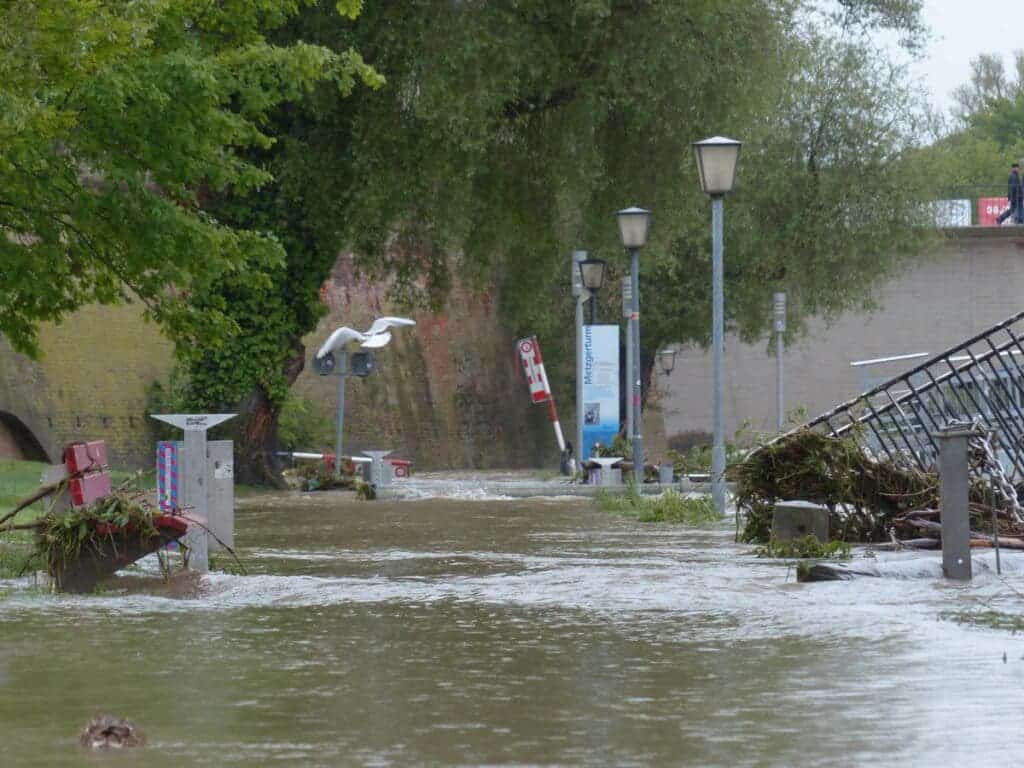Extreme weather events amplified by global warming have caused about $65 billion in losses in the first half of the year, half of which affected uninsured assets, according to a report by German insurer Munich Re. While overall damages dropped from the $105 billion reported a year earlier, the data didn’t include the full fallout from Europe’s heatwave — and we’re just halfway through the year.

Warmer temperatures, sea level rise, and extreme weather — all of which can be consequences of the climate crisis — can damage property and critical infrastructure, impact human health and productivity and negatively affect economic sectors such as fisheries, tourism and agriculture. And it’s not something of the long-term future, it’s already happening now.
The report released by the multinational company focuses on the economic losses because of climate disasters that happened between January and June this year. The list includes winter storms in Europe, earthquakes in Japan, floods in Australia, tornados in the US and heatwaves in most of the world — with an overall loss of $65 billion from these events.
“They may all be individual events with different causes, but taken together, one thing is becoming extremely clear: the powerful influence of climate change is becoming ever more evident,” Ernst Rauch, chief climate scientist at Munich Re, said in a statement. “And the consequences for people across the world are becoming ever more palpable.”
The high toll of climate change
The floods in Australia were the costliest disaster in terms of insured losses, reaching $3.7 billion, according to the report. During late summer and early Autumn, eastern Australia experienced extreme rainfall and floods, with parts of Queensland and South Wales registering record rainfall and flooding. The last week of February was the wettest since 1900.
In total, the Asia-Pacific region accounted for $22 billion of overall natural disaster losses in the first half of the year, with insured losses reaching $8 billion. As well to Australia, Japan was hit by an earthquake with a magnitude of 7.3. The epicenter wasn’t far from the site where another earthquake triggered a tsunami and a nuclear disaster at Fukushima — this was one of the disasters not linked to climate change.
The US accounted for almost half of overall losses in the first six months of the year and nearly two-thirds of insured losses, with a figure of $19 billion. A single thunderstorm with strong tornadoes in early April was the leading cause, destroying assets worth $3 billion, three-quarters of which were insured, according to the report’s estimates.
In Europe, overall losses were $5.2 billion, with extreme heat and arid conditions leading to water scarcity and wildfires, especially in Italy, Spain, and Portugal. There was also a massive glacier collapse on Marmolada, a mountain in Italy, and winter storms, especially in February, that brought hurricane-force winds in places such as Ireland and Germany.
“The IPCC has made a clear diagnosis, stating that weather-related disasters such as heatwaves, torrential rainfall or droughts on a warmer Earth will increase in both frequency and intensity. Heatwaves will tend to last longer and bring more extreme temperatures. This will differ from region to region,” Rauch from Munich Re said in a statement.
It’s hard to say just how much of this damage can be owed to climate change, but researchers have emphasized for decades that this is exactly the type of scenario you’d expect to see happening if we continue spewing out greenhouse gases.
While the situation may seem bleak, reducing greenhouse gas emissions now and significantly could still prevent many of the impacts of the climate crisis, as highlighted in several of the reports of the Intergovernamental Panel on Climate Change (IPCC). It’s an enormous challenge ahead of us, but one that’s worth the effort.


